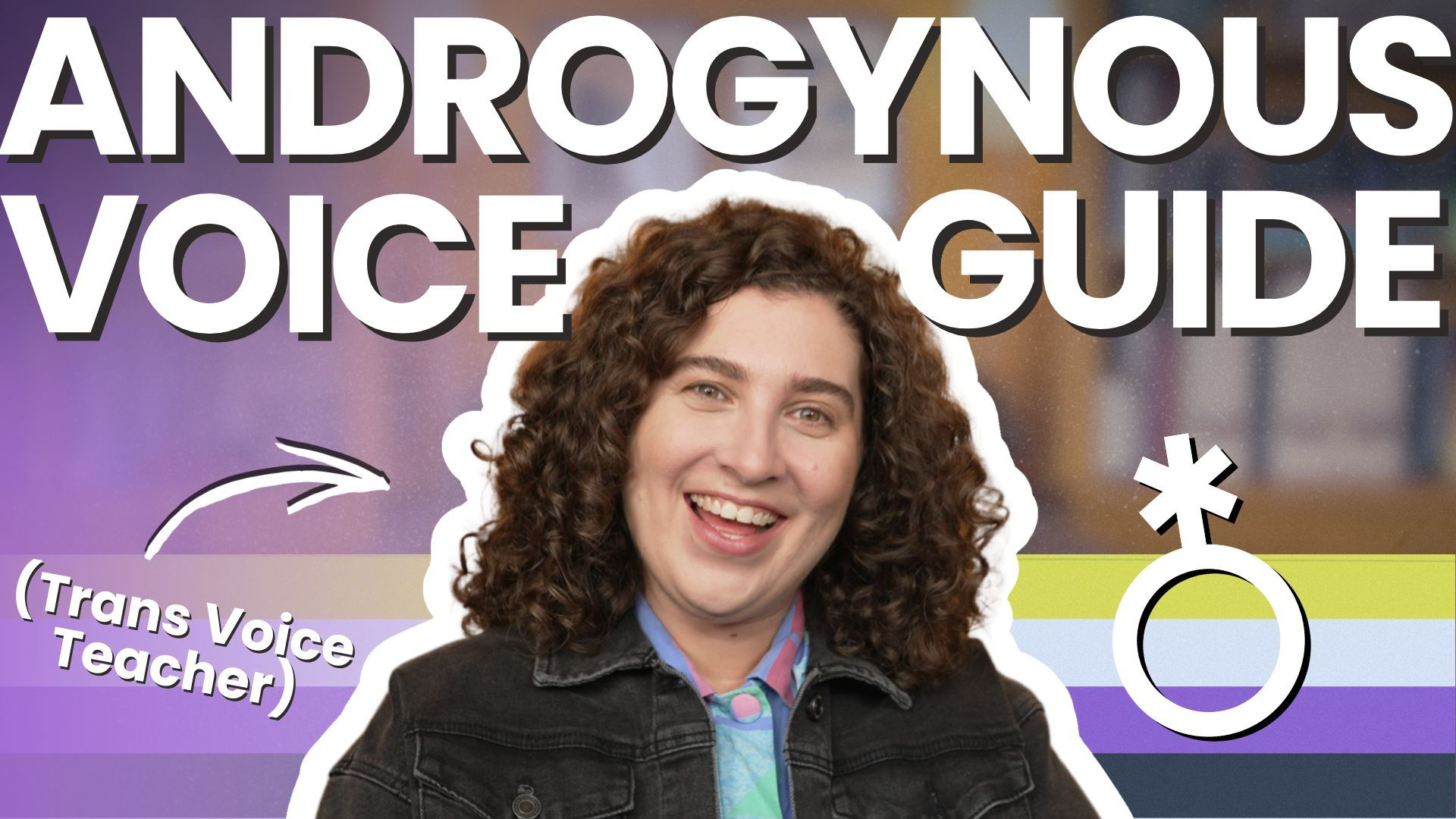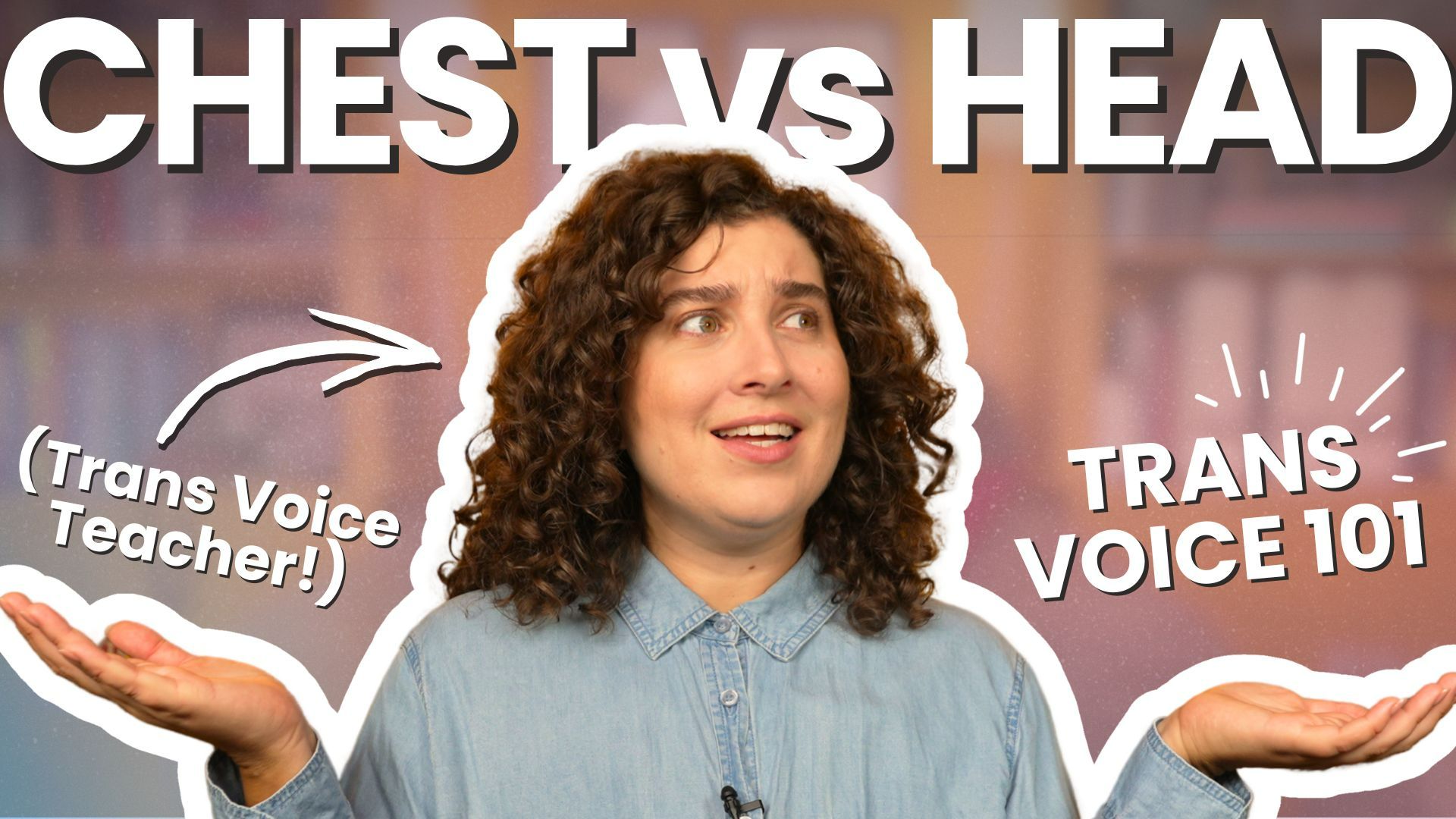Voice Feminization Surgery, Explained (with Tallulah Breslin)
May 22, 2025
Earlier this year, I published a YouTube video exploring what gender-affirming voice surgery can (and can't) do. It sparked a ton of conversation—and it also made me realize that there’s still so much more to say.
So I invited voice-specialized speech-language pathologist Tallulah Breslin to sit down with me and unpack the details. Tallulah runs Harmonic Speech, a practice specializing in gender-affirming voice care, and has worked with many clients who are considering or recovering from various types of voice surgery. We met recently at a gender-affirming voice conference in Boston, and I knew they’d be the perfect person to guide us through the complexities.
In this in-depth interview, we cover the most common procedures, the myths and realities around outcomes, the potential risks and side effects, and how to know whether surgery might be right for you. We also discuss why surgery alone is rarely enough to create your ideal voice—and why voice training still plays a crucial role.
Whether you’re considering surgery, have already had it, or just want to better understand what’s out there, this conversation is for you.
Watch the Full Interview
What Is Voice Feminization Surgery?
Voice feminization surgery refers to a set of procedures designed to raise the speaking pitch and/or alter the perceived gender of the voice. While not exclusive to any gender identity, these surgeries are most often sought by trans women or transfeminine people who want their voices to better align with their gender.
Pitch-raising surgeries typically involve shortening the vibrating portion of the vocal folds or adjusting tension. The most common of these is Wendler glottoplasty.
Common Procedures and How They Work
Wendler Glottoplasty
This is currently the most widely performed voice feminization surgery. It involves creating a web at the front of the vocal folds to shorten their vibrating length. On average, this raises pitch by 20–24 Hz, and results can be significantly improved when combined with voice training.
Vocal Fold Shortening with Retroplacement of the Anterior Commissure (VFSRAC)
Developed in Korea and now increasingly available in the U.S., this procedure combines shortening with increased tension for a lighter, higher-pitched voice. It can provide more dramatic pitch changes but comes with higher risks, including voice quality trade-offs.
Cricothyroid Approximation (CTA)
CTA is an older surgery that adjusts cartilage on the outside of the larynx to increase pitch. It can be performed alongside a tracheal shave but often doesn’t hold up over time—the pitch increase tends to fade.
Controversial or Higher-Risk Procedures
LAVA (Laser Assisted Voice Adjustment)
LAVA stiffens and scars the vocal folds without significantly raising pitch. It carries high risks with few benefits and is generally not recommended.
FemLar (Feminization Laryngoplasty) FemLar aims to change both pitch and resonance, but it involves disconnecting and reattaching the vocal folds—an extremely invasive and risky procedure. Revision rates may be as high as 41%.
Tracheal Shave: Is It a Voice Surgery?
Also called a chondrolaryngoplasty, this surgery reduces the visible prominence of the larynx, sometimes called the Adam’s apple. While it’s not inherently a voice surgery, it can impact the voice if done improperly. Tallulah explains how to ensure your surgeon takes protective steps, like using a needle marker to avoid damaging vocal fold insertion points.
Who Benefits Most from Surgery?
People who are considering surgery may:
-
Have already done voice training but are unsatisfied with their results
-
Feel exhausted from needing to consciously modify their voice
-
Experience significant dysphoria that voice training hasn’t resolved
Surgery can help reduce the effort involved in maintaining a gender-affirming voice—but it almost always still requires training afterward for best results.
When Surgery Might Not Be the Right Fit
You might want to wait or reconsider if:
-
You haven’t explored behavioural voice training yet
-
You’re unsure of your long-term voice goals
-
You use your voice professionally (e.g. as a singer) and can’t afford a loss in range or vocal flexibility
-
You have other surgeries planned—voice surgery should always be last due to the risks of damaging surgical changes during future intubation
Risks, Complications, and Recovery
All surgeries come with trade-offs. The most common side effects of pitch-raising surgery include:
-
Hoarseness, breathiness, or a reduced vocal range
-
Difficulty projecting or speaking loudly
-
Loss of lower and upper pitch extremes
-
Mucus build-up and tension during recovery
Two weeks of total voice rest is typically required, followed by gradual reintroduction and therapy. Notably, Tallulah emphasizes that the more informed and prepared you are, the smoother your recovery will be.
What About Singing?
For singers or voice professionals, surgery is usually discouraged due to the significant loss in range and vocal flexibility. Even a subtle change in vocal quality can have major consequences for a singer’s instrument.
How to Choose a Surgeon
Look for someone who:
-
Specializes in voice feminization surgery and performs it regularly
-
Has a transparent process, including pre- and post-op voice therapy
-
Is willing to explain their techniques and risks (avoid secret “proprietary” surgeries)
Proximity matters too—recovery is easier when you’re not traveling across the world.
Final Takeaways from Tallulah
Surgery is one tool in the toolbox—not a magic fix. The best outcomes come when clients:
-
Understand that pitch is only one piece of the voice puzzle
-
Get voice training before and after surgery
-
Choose a skilled, experienced, communicative surgeon
-
Set realistic expectations and timelines
Tallulah puts it best: “As long as you’re informed, you can make whatever choice you want about which path to go. Both surgery and not surgery are valid paths that can get you to your voice goals.”
More Resources
-
Tallulah’s website: harmonicspeech.com
-
My previous video: Watch "Gender-Affirming Voice Surgery: What It Can (and Can’t) Do"
Want weekly tips, resources, and insights on trans voice training? Sign up for my newsletter and get the latest content delivered straight to your inbox. It's free!









